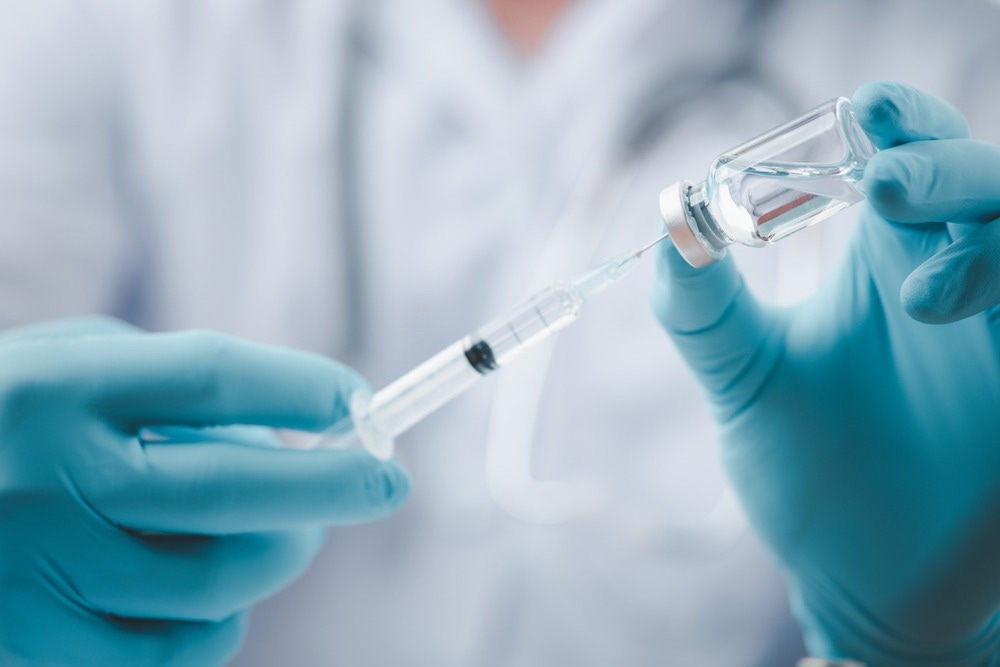A recent study published in Morbidity and Mortality Weekly Report estimated the efficacy of the JYNNEOS vaccine against mpox.
 Study: Estimated Effectiveness of JYNNEOS Vaccine in Preventing Mpox: A Multijurisdictional Case-Control Study — United States, August 19, 2022–March 31, 2023. Image Credit: LookerStudio/Shutterstock.com
Study: Estimated Effectiveness of JYNNEOS Vaccine in Preventing Mpox: A Multijurisdictional Case-Control Study — United States, August 19, 2022–March 31, 2023. Image Credit: LookerStudio/Shutterstock.com
Background
The United States has recorded over 30,000 mpox cases by March 21, 2023. JYNNEOS, the Modified Vaccinia Ankara-Bavarian Nordic vaccine, was approved in 2019 for smallpox and mpox prevention in a two-dose regimen.
To increase vaccine access, the vaccine was authorized for emergency use in a dose-sparing approach (0.1 ml per dose instead of 0.5 ml per dose). It was offered to individuals with presumed or known mpox exposure and those at risk of mpox or who could benefit from vaccination.
About the study
In the present study, researchers assessed the effectiveness of the JYNNEOS vaccine in a matched case-control cohort across 12 jurisdictions in the US. Cases had a probable or confirmed diagnosis of monkeypox virus infection on August 19, 2022, or later. Controls were those visiting sexual healthcare, human immunodeficiency virus (HIV) care, or HIV pre-exposure prophylaxis (PrEP) clinics, who did not have a mpox diagnosis.
Cases were identified through health department registries, and controls were identified through passive or active recruitment approaches at local clinics. Sexually-active individuals aged 18-49 who identified as transgender or men who have sex with men (MSM) were eligible for participation.
Participants were asked to complete an online or telephonic survey, which included questions on mpox diagnosis or vaccination, exposure history, immunocompromised conditions, and demographic information.
The index date was the date of the positive result for cases or clinic visits for controls. Vaccination registries were used to verify the vaccination status. Participants were classified as fully vaccinated, partially vaccinated, and non-vaccinated. Each case was matched with around four controls based on the index date and the state or region.
The authors used conditional logistic regression to compute odds ratios assessing the association between case/control status and vaccination status. Additionally, the team adjusted models for age, ethnicity/race, immunocompromised status, and close contact with mpox case(s). Vaccine effectiveness (VE) estimates were stratified by the route of administration and immunocompromised status.
Findings
Around 86.1% of 1414 respondents had the required data for the analysis. The team matched 309 cases with 608 controls. Over 32% of cases and 23.4% of controls were Hispanic or Latino, and 27.2% of cases and 16.9% of controls were non-Hispanic Black or African American. More cases than controls reported experiencing recent homelessness, living with HIV, and engaging in transactional sex.
Among participants not living with HIV, fewer cases than controls reported taking HIV PrEP. There were more cases with immunocompromised conditions or recent contact with a mpox case. About 22.5% and 32.2% of participants received two doses and a single dose, respectively, and 45.4% were not vaccinated.
The crude VE was 87.4% and 75.7% for complete and partial vaccination, respectively. After adjustment, VE was 85.9% for two doses and 75.2% for the single dose. The VE was 80.6% and 77% for partially vaccinated subjects by the intradermal and subcutaneous administration routes, respectively.
Similarly, the VE was 80.3% for intradermal administration and 88.9% for subcutaneous injection among double-dose recipients. The VE was 51% and 70.2% for immunocompromised subjects after partial and complete vaccination, respectively. The VE was 72.1% and 87.8% for partial and complete vaccination among immunocompetent individuals.
Conclusions
The adjusted VE of the JYNNEOS vaccine against mpox was 75.2% for the single dose and 85.9% for the double dose, consistent with evidence from prior studies. The researchers also computed VE for immunocompromised individuals and by the route of vaccine administration. VE was comparable by the administration route.
The findings may have several limitations, including selection bias, recall or social desirability bias due to the self-reporting nature of the survey, lack of VE estimates for post-exposure prophylaxis (PEP) due to the small sample size, and the non-generalizability to the entire US population. Additionally, some participants with well-controlled HIV might have been misclassified as immunocompromised.
Vaccination remains a critical tool for mpox prevention, and the study corroborated the efficacy of the JYNNEOS vaccine in reducing the risk of mpox. Additional precautions should be considered to mitigate exposure, especially among immunocompromised individuals. Further research is required to determine the durability of the protection.
Journal reference:
- Dalton AF, Diallo AO, Chard AN, et al. Estimated Effectiveness of JYNNEOS Vaccine in Preventing Mpox: A Multijurisdictional Case-Control Study — United States, August 19, 2022–March 31, 2023. MMWR Morb Mortal Wkly Rep, 2023. doi: 10.15585/mmwr.mm7220a3